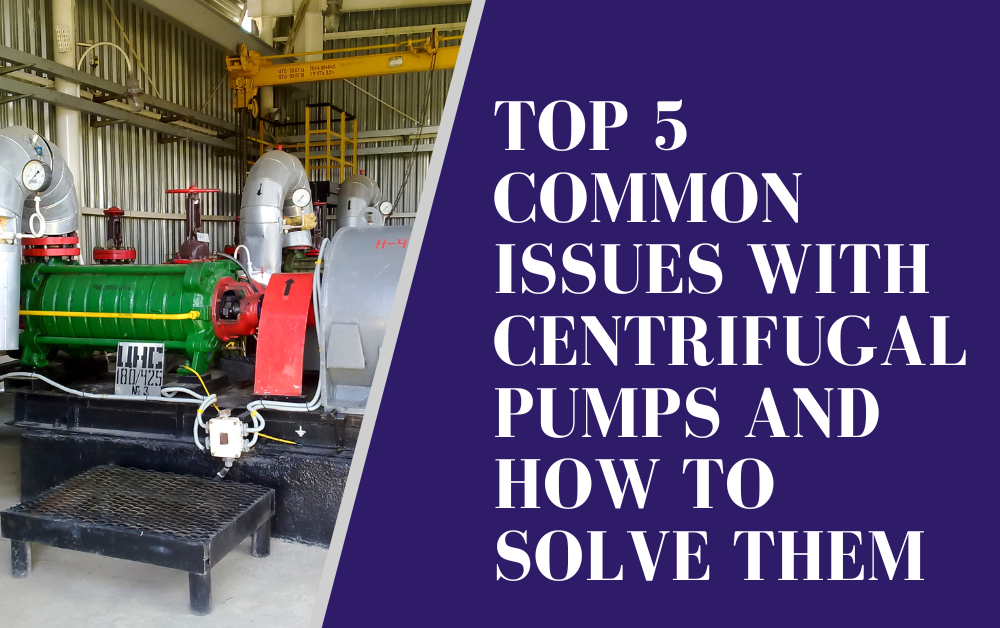Introduction
Centrifugal pumps are workhorses in various industries, from manufacturing to agriculture, providing essential fluid transportation. However, like any machinery, they can encounter problems that affect their performance. In this straightforward guide, we’ll delve into the top five common issues with centrifugal pumps and offer practical solutions to get them back in optimal working condition. Whether you’re a seasoned professional or a curious novice, understanding these issues and their remedies can help you maintain the efficiency of your centrifugal pump.
1. Cavitation: The Bane of Centrifugal Pumps
Identifying Cavitation
Cavitation occurs when low pressure in the pump’s suction side causes the formation of vapor bubbles. These bubbles collapse violently when they enter higher pressure areas, leading to damage and noise.
Solving Cavitation Issues
To combat cavitation, ensure that the pump’s suction pressure remains within the manufacturer’s recommended range. You can achieve this by adjusting the pump’s speed or by improving the inlet pipe design. Regular maintenance to replace worn impellers or casings can also prevent cavitation.
2. Overheating: A Pump’s Worst Nightmare
Recognizing Overheating
Overheating is often signaled by an increase in the pump’s operating temperature. It can result from a variety of factors, including excessive friction, inadequate lubrication, or improper fluid flow.
Addressing Overheating Problems
To prevent overheating, maintain proper lubrication of bearings and ensure that the pump operates within its specified design parameters. Regularly check for obstructions in the pump’s flow path, which can hinder cooling. Additionally, monitor the condition of motor windings and consider installing temperature sensors for early detection.
3. Impeller Damage: A Cause for Reduced Performance
Detecting Impeller Damage
Impeller damage can manifest as reduced flow rate or increased power consumption. It can result from cavitation, foreign objects in the pump, or abrasive fluids. Install vibration and temperature monitoring systems to detect seal issues early. These systems can provide alerts when unusual conditions or temperature fluctuations are detected, allowing for timely intervention.
Rectifying Impeller Damage*
Preventing cavitation and ensuring proper filtration of the fluid can mitigate impeller damage. Regular inspections to remove any debris or foreign particles are also essential. If damage occurs, consider replacing the impeller or even upgrading to a more robust material for enhanced durability.
4. Seal Leaks: A Source of Wasted Energy
Identifying Seal Leaks
Seal leaks are evident when fluid escapes from the pump casing or the seal chamber. They can lead to energy wastage, contamination, and reduced pump efficiency.
Resolving Seal Leaks*
Regularly inspect and maintain the seals, ensuring they are correctly installed and lubricated. Establish a preventive maintenance schedule to replace seals before they fail. Consider upgrading to mechanical seals for improved reliability. Remember that addressing seal leaks promptly not only prevents energy and product wastage but also extends the life of your pump and reduces maintenance costs in the long run. It’s a proactive approach that ensures your centrifugal pump operates efficiently and reliably, minimizing downtime and production disruptions.
5. Vibration Issues: Alarming but Manageable
Detecting Vibration Problems
Excessive vibration can indicate misalignment, loose components, or structural issues with the pump and its foundation. It can result in premature wear and decreased pump lifespan. Implement a routine inspection schedule to check the condition of the pump seals. Look for signs of wear, damage, or misalignment. Early detection can prevent minor issues from escalating into major leaks.
Mitigating Vibration Challenges*
Periodically check the pump’s alignment and tighten any loose components. Verify that the foundation and baseplate are stable and properly grouted. Install vibration monitoring systems to detect issues early and take corrective action. Proper lubrication of the seals is essential to reduce friction and prevent premature wear. Lubrication also helps maintain a tight seal.
Conclusion: Keeping Centrifugal Pumps at Peak Performance
In conclusion, understanding the common issues that centrifugal pumps may face is the first step in ensuring their reliable performance. By identifying and addressing problems like cavitation, overheating, impeller damage, seal leaks, and vibration issues, you can extend the lifespan of your pumps, minimize downtime, and reduce maintenance costs. Regular maintenance, proper monitoring, and adherence to manufacturer guidelines are key to keeping your centrifugal pumps in peak condition. Whether you’re a seasoned technician or a novice, these practical solutions can help you maintain the efficiency and reliability of your centrifugal pumps, ensuring they continue to serve their critical roles in various industries.
